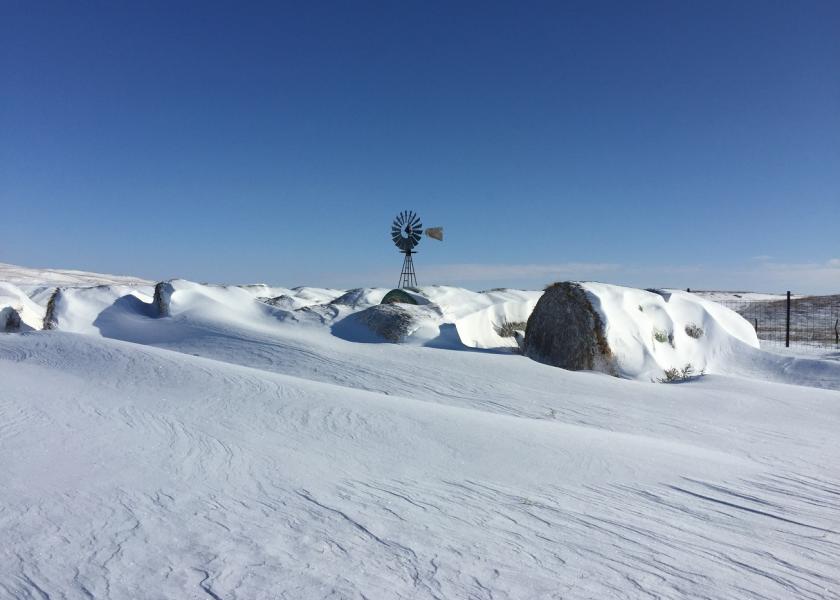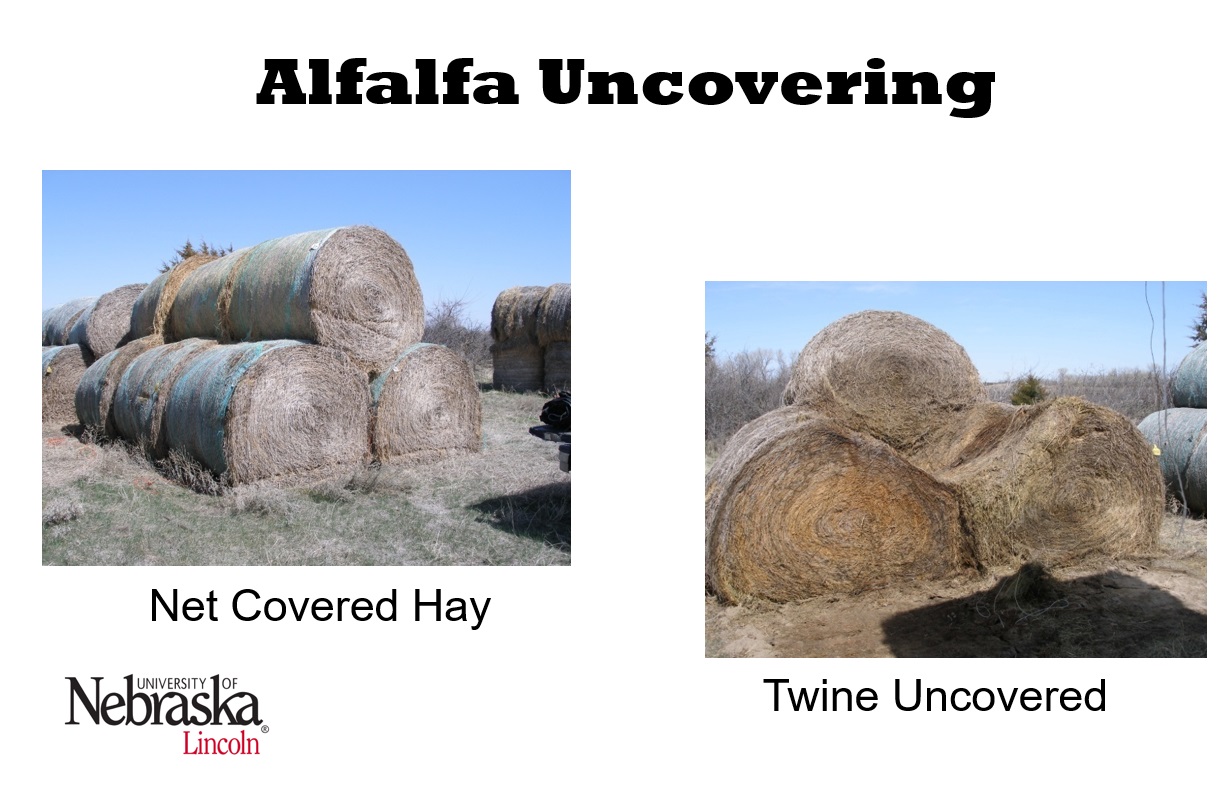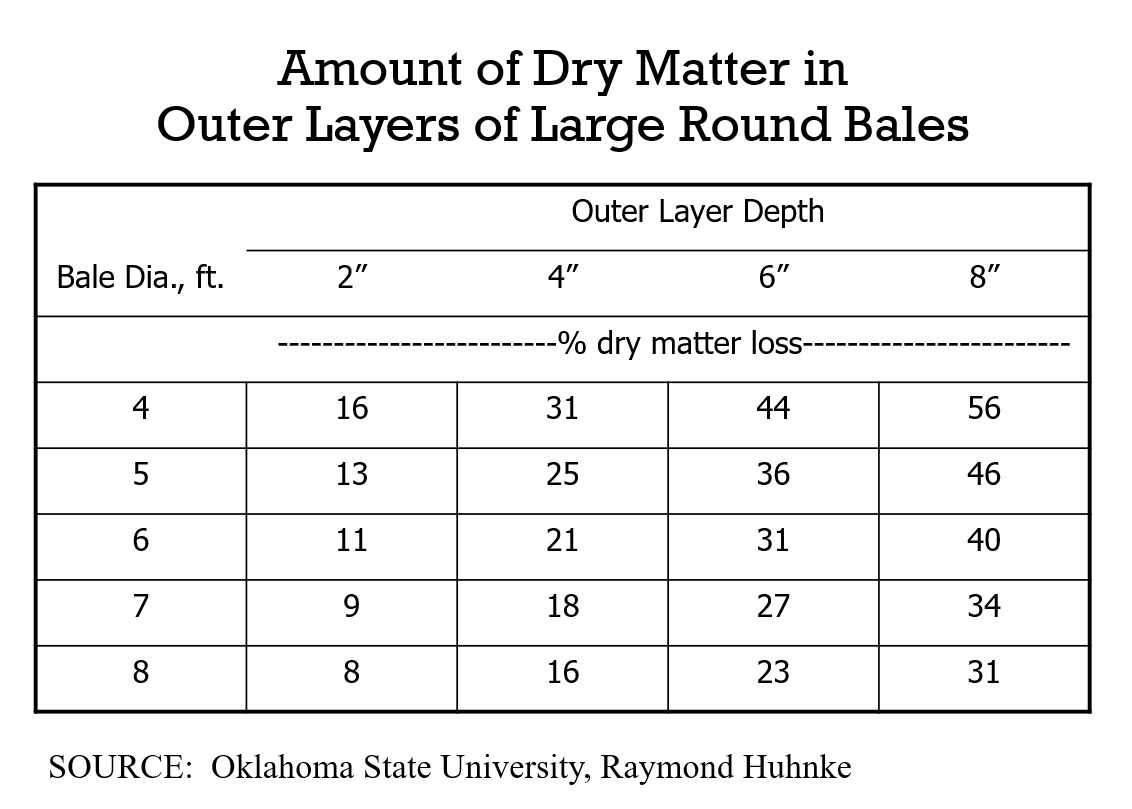Minimizing Storage Losses of Round Bale Hay

Storing big round hay bales by lining them up along the fence row may be easy, but it is not economical. Baled forage probably constitutes the highest percentage of winter feed cost we have wrapped up in a cow.
The production of hay uses immense resources, and the ration quality is affected by hay quality. Storing dry hay on the ground without cover causes greater amount of spoilage when compared to other methods of storage.
Results found from ranch research done in the Sandhills of Nebraska by the University of Nebraska Extension in 2005-2008 reported no significant nutrient changes in total dry matter pounds, pounds of crude protein or pounds of total digestible nutrients on native hay and alfalfa plots. However, visual damage losses after one year between covered and uncovered with twine or net wrap are reported.

It should be recognized that there’s no one “right way” for everyone when it comes to hay storage. Producers should consider three factors in determining their optimum storage method.
1. Look at hay quality, or value. There is a remarkable dollar difference in a 25% loss on $200/ton of hay vs. $100/ton hay. The better the quality, the more you’ll save putting it under storage.
2. Evaluate the likelihood of spoilage in your climate. Spoilage, or weathering, is the result of moisture getting into bales, and temperature accelerating bacterial breakdown of the cellulose. Warmer temperatures, combined with moisture increase bale deterioration.
Wind can also influence drying time. Moisture gets into bales in three ways: rainfall, snowmelt, and humidity. The tops of bales absorb moisture from rain, snowmelt, while the bottom wicks moisture from the ground.
3. Consider the length of time bales will be exposed to weathering. First cutting forages are more susceptible than hay harvested in the fall, depending on when it’s fed. Once you’ve considered your elements, choose a storage method that best fits your needs.
Table 1. Shows the amount of loss you can have in a round bale from dry matter in the outer layers of large round bales. An example is a 6-foot diameter bale and a 4-inch outer layer depth that has 21% of volume of the hay in that bale.

Research from past studies shows outdoor storage losses range from 5-35%, this can be reduced by 2/3 with indoor storage and be reduced by 50% with good plastic covering outdoors.
Recommendations for Storage Techniques
- Make a dense bale: It will shed more precipitation, sag less, and have less surface area to absorb moisture. By using net wrap, you will reduce bale sag and maintain bale shape. In addition, net wrap makes a tight, smooth surface that will resist weathering, insects, and rodents.
- Store bales on a well-drained location with a 4–6-inch coarse rock base that will minimize bottom spoilage.
- Store bales end-to-end, in rows, facing in a northwest to southeastern direction whenever possible.
- Space adjacent lines at least 10 feet apart.
- Stacking bales usually increase losses.
- Locate bale rows away from fences and fields and it is recommended to cover hay if keeping more than one year.







